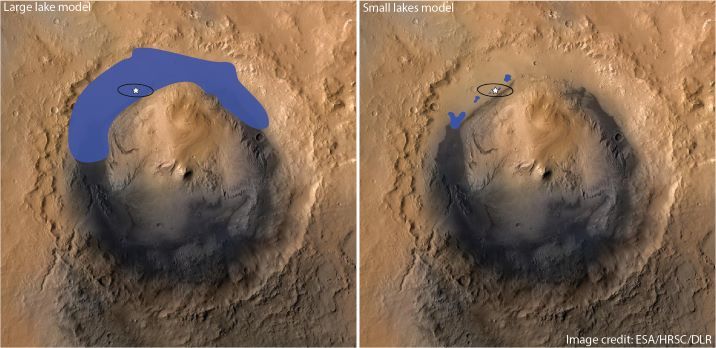NASA’s Curiosity rover has been exploring Gale crater for nine years, and the sediments it’s been studying look an awful lot like those left behind from an ancient lake. But now new research from the University of Hong Kong proposes a much drier explanation.
Gale crater was chosen as Curiosity’s landing site due to scientific suspicions that it had once been a lake. After the rover touched down in August 2012, it quickly got to work searching for evidence of that hypothesis. And it seemed to find plenty of it – in particular the striking layer-cake sediments of the Murray Formation and Mount Sharp, which were believed to have formed from meltwater flowing into the crater from the rim, depositing sand and silt on the bottom.
But the researchers on the new study argue that this story doesn’t stack up. Instead, their chemical analysis says that the sedimentary rocks were formed from sand and silt carried in by the wind and deposited. Water was still involved, but far less of it – it was either rainfall or seasonal flows from the crater rim. After the rock hardened, it was then weathered into the shapes seen today, predominantly by the wind, but also by some acidic rain.
This water would still have pooled into lakes, but they likely would have been far smaller and shallower than has been traditionally theorized.

ESA/HRSC/DLR
The key, the team says, is that immobile elements – those that don’t dissolve in water easily – are concentrated at higher elevations in the rock. This is evidence that the weathering happened from the “top down” – if it formed in a lake environment, these elements should gather at the bottom.
The researchers also say that the ancient atmosphere appears to have been a reducing one, rather than the modern oxidizing atmosphere. Depleting iron as the weathering increases seems to be a smoking gun for that.
“Their data present challenges to existing hypotheses for both the depositional environment of these unique rock formations and the atmospheric conditions that they formed under,” says Dr. Ryan McKenzie, from HKU’s Department of Earth Science. “Specifically, the authors show evidence for weathering processes under a reducing atmosphere in a subareal environment similar to a desert, rather than formation in an aqueous lake environment.”
Of course, it’s hard to know for sure when you’re studying rocks from millions of miles away, but further study could help build a better picture of ancient Mars. With the recent arrivals of NASA’s Perseverance and China’s Zhurong, and Europe’s next ExoMars mission due in 2022, there are more hands on deck to investigate than ever.
The research was published in the journal Science Advances.
Source: Hong Kong University
Source of Article